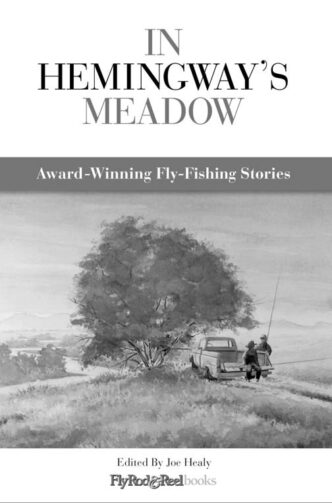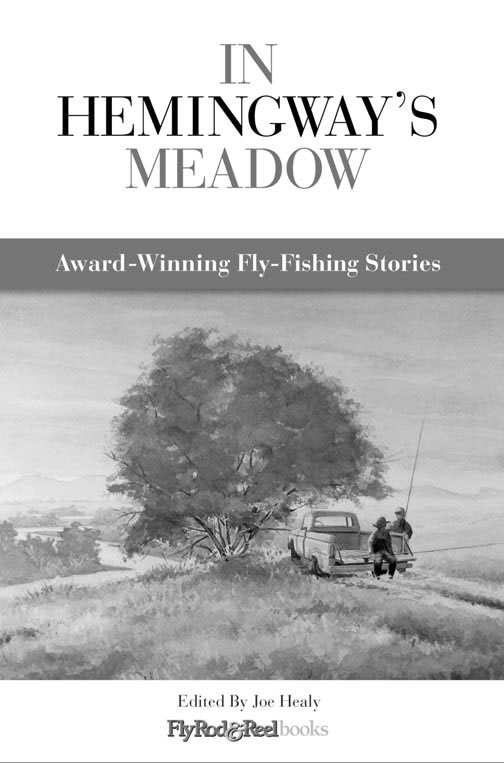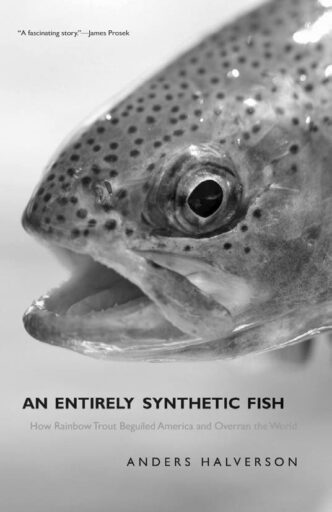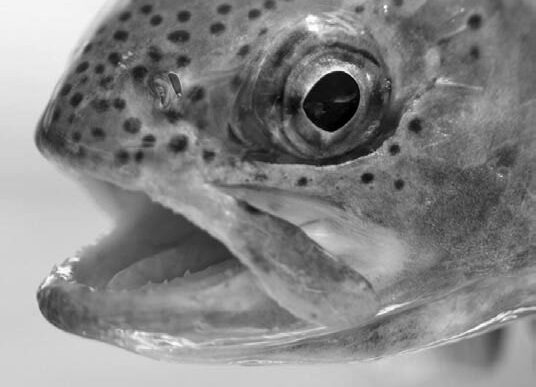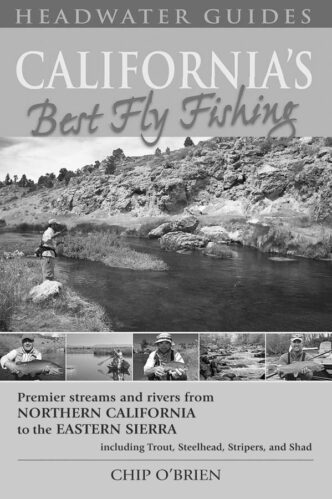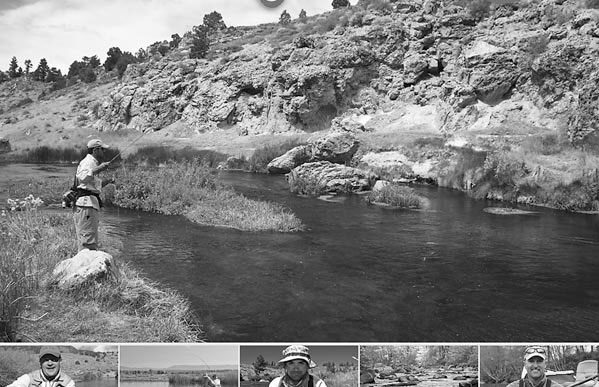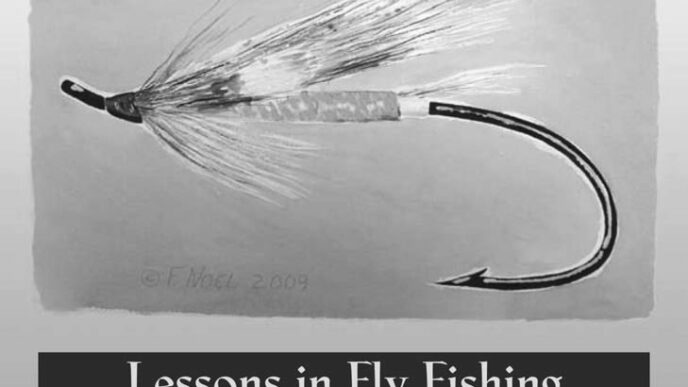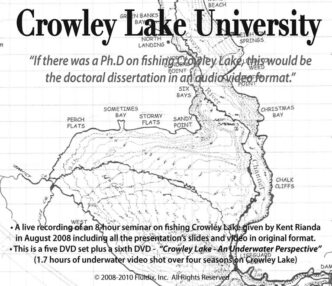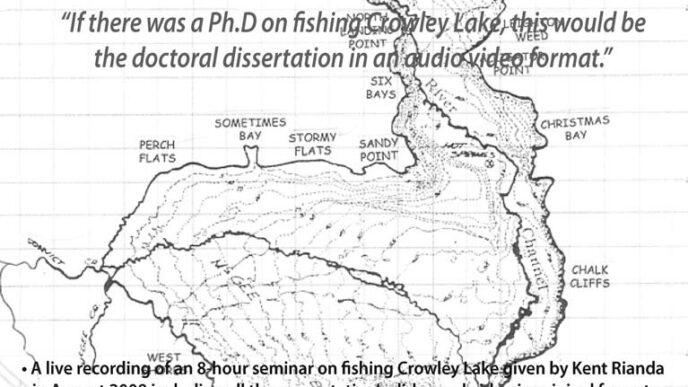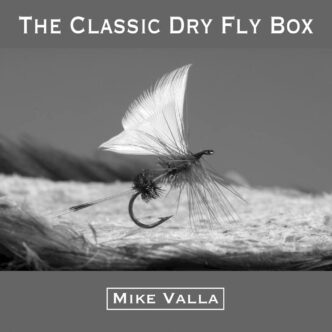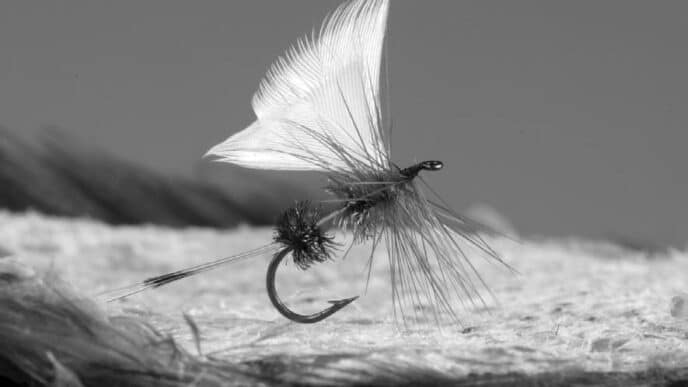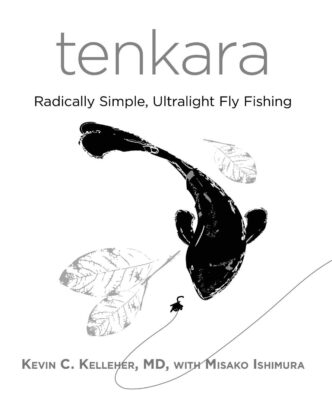In Hemingway’s Meadow: Award-Winning Fly-Fishing Stories
Edited by Joe Healy. Published by Fly Rod & Reel Books, 2010; $16.95 softbound.
Robert Traver, for those of you who don’t read print except for California Fly Fisher, was the pen name of John Voelker, a Michigan jurist, writer, and fly fisher who died in 1991. Traver wrote, among other things, the novels Anatomy of a Murder and Laughing Whitefish and the oft-quoted “Testament of A Fisherman.” He was one of the upper Midwest’s most prominent angling voices and something of a celebrity among fly fishers in the 1960s and 1970s.
Every year since 1994, Fly Rod & Reel magazine, in conjunction with the John D. Voelker Foundation, has sponsored the Robert Traver Fly-Fishing Writing Award, honoring the best original fly-fishing essay or story. Submissions are open to anyone, and the winning pieces, along with the runners-up, get cash prizes and are published in the magazine.
Joe Healy, the editor and associate publisher of Fly Rod & Reel, has gathered up 17 winners and finalists from Traver Award submissions dating back to 1994 in a collection named after the story that won in 2007. If the combination of fly fishing and very good writing is your thing, In Hemingway’s Meadow makes for some of the best short reads around. They’re not only entertaining, they also inform us about how contemporary writers — and arguably the audience who reads them — perceive our sport and the intellectual and emotional landscape that it occupies.
A handful of the stories are purely imaginative. Mallory Burton’s “The Virtual Angler” places us in a future where wild places have long been closed to human intrusion, and activities such as angling are relegated to highly sophisticated virtual simulations. In “Tex, Mex, and the Amazons,” by Rhett Ashley, a banged-up “Texican” bull rider and a New Mexico orchardist end up spending a week in an Alaska fishing camp that was intended to be the exclusive province of a handful of aggressive feminist divorcée dry-fly purists. The humor here is, if I can risk a pun, pretty broad.
“Uncle Sergei’s Madness,” by Joel Parkman, is a first-person narrative in the convincing voice of a Russian man speaking an almost colloquial English about his scientist uncle’s obsession with “captivating the clever fishes by using the theory of the exact representation of the concurrent stage of metamorphosis of insects in the habitat of the feeding river fishes.” It’s a sly and humorous take on the difficulties not simply of translation, but of building something you’ve never seen to do something you’ve never done. The rest of the stories are of a more serious and reflective character and in one way or another treat fly fishing as a means of self-discovery. The collection’s title piece, “In Hemingway’s Meadow,” by Jeff Day, follows the writer to the Fox River — the Big Two-Hearted of Hemingway’s famous short story. “What did I know about truly and care about the most?’” Hemingway asks himself in a later piece, thinking of the time in 1925 when he was broke, unknown, and discouraged and sat down in a Paris café to write a story about a man coming home from war. Carrying a bamboo rod, silk line, blankets, and canned food in a rucksack as Nick Adams did in Hemingway’s story, Jeff Day tries to experience the river as it might have been in the early 1900s. That the river is different goes without saying, and I’m not sure the story works as well as it should to convey a sense of what’s been lost. But it provides a fitting title for the collection.
To the extent that Hemingway’s story is as significant to American fly-fishing writing as Hemingway claimed Huckleberry Finn is to American literature in general, I guess we’re all travelers in Hemingway’s meadow.
Some of the stories are very good indeed. Kate Small’s narrator in “Lateral Lines” finds friendship and a way to deal with the death of a husband. A recently separated character in Richard Chiapone’s “Opening Day” learns that “sometimes you just lose them.” And Keith McCafferty’s narrator, escaping family and business on a steelhead trip to British Columbia, searches for himself in fishing, wondering what it is that other anglers really fish for and whether they “have to search as deep in the current for it” as he does.
A few stories use fly fishing as a means through which characters grapple with the effects of age and illness, relationships, and death. That sounds ominous, I know, but these are all recurring themes in contemporary angling literature. Handled well, as they are in most of these stories, they can be both instructive and moving. A chancy decision to continue a run down a river in the dark leads Peter Fromm’s narrator in “Home Before Dark” to a rapprochement with an estranged stepson. In E. Donnall Thomas’s “Ephemerella,” the narrative takes the form of a journal of a man dying of prostate cancer who comes to understand that “people and mayflies have more in common than either might imagine” before hobbling off into the night to the river. “I am not going gentle into that good night. I am going fishing.” Peter Fong’s “Letter From Yellowstone” begins “I remember Yellowstone in 1978 the way the snake remembers Eden” and goes on to chronicle his regret over a lost wife and the lost friend to whom the letter is written. When I was younger, I used to wonder what there was about hunting and fishing that sends so many writers off into paroxysms of angst. Is it that blood sports — and fly fishing’s that, no matter our attention to catch-and-release etiquette — force us to confront mortality? Maybe so, but I now think I had things backward: that life, while frequently joyous, also inevitably involves frustration and loss. I welcome the fact that some very fine writers, like many of us, have made use of fly fishing as a path to . . . heck, I don’t know . . . salvation, perhaps, perhaps simply escape. In any case, it works for me, as does this anthology of fine stories.
(By the way, submissions for the 2010 Robert Traver Fly-Fishing writing Award, limited to 3,500 words, are due by May 15. You can find more information at http://traver-fly-fishing-writing.)
D .C. Ounty
BugWater
By Arlen Thomason. Published by Stackpole Books, 2010; $49.95 hardbound.
The title BugWater (one word) pretty well sums up this book. It is about bugs that live in water — or, to be more specific, it is about aquatic insects that fly fishers imitate to catch trout.
The cover states that BugWater is “a fly fisher’s look through the seasons at bugs in their aquatic habitat and at the fish that eat them.” The book gives you a sense of entomology without being an entomological source. The lack of entomological keys for identification quickly takes BugWater out of the running as a match-the-hatch reference book or insect field guide. On the other hand, I don’t know of any match-the-hatch book or guide that gives the reader the depth of information or feeling about each bug that this book does.
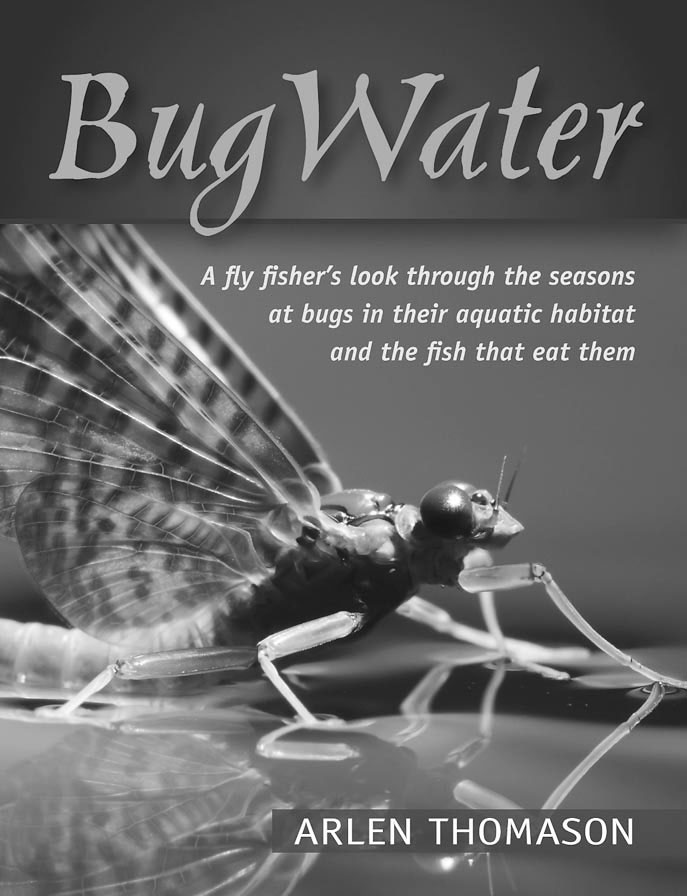
Thomason threads his insects on the string of the seasons. Starting with the March Browns “marching into spring,” he spends several pages delving into the mysteries of a hatch, what makes a hatch, and why hatches occur when they do. It is not reading for the fainthearted, but for those of us tired of the same old one-paragraph explanations of a hatch process, it is enlightening and provocative.
The chapters tell the tales of the major players in each season’s hatches based upon the author’s experience in the Pacific Northwest. From first-hand accounts of fishing a hatch to detailed descriptions of the bugs, their behavior, and imitations, Thomason walks us through what to expect, what to look for, and how to react when a hatch occurs.
In many of the seasonal chapters, the author veers off on highly detailed tangents regarding such subjects as insect vision and trout-fishing tactics. As a consequence, in the end, the reading experience is rather disjointed, and the writing never approaches any kind of cadence. If you are looking for an elegant read, don’t go here. If you are looking for a book full of good information based on good research and thoughtful insights, please do go here!
The photographs are great. The author uses aquariums and slant tanks to demonstrate what bugs and their imitations look like from a fish’s perspective. Not since The Trout and the Fly, by Brian Clarke and John Goddard (Lyons Press, 2005), has an author made such good and appropriate use of a slant tank. The fabulous pictures were what seduced me into buying the book, and even if the project were simply a collection of pictures with captions, it would get my thumbs-up. If you want to see what bugs look like underwater, up close and personal, you can’t do better than BugWater.
Stackpole has done another outstanding job of producing a quality angling book. The paper is thick and glossy, with color plates on nearly every page. The binding is tight, and the heft of the book is perfect for reading next to the fire on a cool March night. Electronic media will be hard pressed ever to replace books such as BugWater.
Ralph Cutter
Tomorrow’s Fly Fishers
DVD by produced by Krieger Enterprises, 2009; $29.95.
How does one get a kid to pick up a fly rod and, most importantly, stick with learning how to use it? The initial trick, from my experience, is first to create an interest in fly fishing. Mine was piqued one evening, forty-odd years ago, at Lyons Reservoir, near the town of Long Barn on Highway 108. My stepfather and I were on the bank in our usual spot, fishing salmon eggs, and off in a cove to our left, highlighted by the rays of the setting sun, a fellow in a canoe started fly casting.
At that age, my aesthetic sensibility was pretty much defined by comic books and television cartoons, but I knew that what I was seeing was in its way beautiful, and sure as heck, it looked like more fun than sitting on my fanny, waiting for the tip of a propped-up fishing pole to bob up and down.
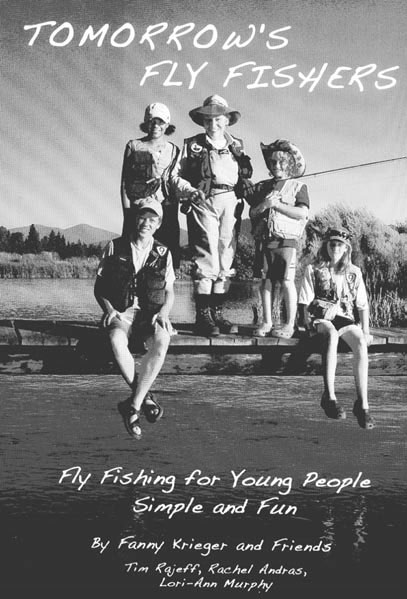
Within a year or two, I had my first fly rod, but didn’t have anyone to teach me how to use it, so I flailed away and over time caught a few foolish trout, then put it in the closet until my late twenties, when an invitation to visit the Trinity brought it back to hand and, eventually, led to the launching of this magazine.
So the pattern for me — and, I suspect, for many others — is that we were first captivated by the visuals of fly fishing, and then the presence or lack of a teacher, a mentor, made all the difference in developing competency in and a passion for the sport. This is why Fanny Krieger’s DVD, Tomorrow’s Fly Fishers, is notable. It has two audiences: kids, who will see their peers fly fishing on-screen and realize that, yes, the sport looks both enjoyable and eminently doable, and adults, who will gain insights in how best to teach the important aspects of fly fishing.
Krieger’s intention in the DVD is to develop in her four grandchildren — two boys, two girls, spanning a wide range of years — an interest in fly fishing and a sense of the skills they’ll need to do it well. She enlists Tim Rajeff to teach casting, Rachel Andras to reveal the things trout eat and their imitations, Vanessa Downs to tie a Woolly Worm, and Lori-Ann Murphy to show how to catch (and release) fish. They use hands-on instruction, and it is all kept short, simple, and fun, which perhaps is the most useful advice for any adult watching the DVD to glean tips for teaching kids. Fly casting is turned into a game, the collection of insects into an adventure. The teachers are patient, enthusiastic, and seek smiles, rather than perfection. They serve as wonderful role models. Interestingly, across the course of the 43-minute DVD, the amount of information imparted to the children is actually somewhat slender. But this is as it should be. As Krieger wisely notes, “Don’t try to do it all in one day.” Moreover, interest can vanish when expectations are too high. Krieger and her friends provide a basic foundation of knowledge, willing to let the kids figure things out on their own or seek more help.
The fly-fishing industry has been concerned for a number of years about how to bring new participants into the sport, especially now that the boom caused by A River Runs Through It has pretty much run its course. Ideally, people should get involved when they’re young, because doing so will create the skills that will let them fly fish throughout their lives or return to fly fishing after the usual impediments of school, hormones, and early career building have played themselves out. At least two books have been published on how to teach fly fishing to children, but a visual medium is far more useful than the written word in showing the attitude and approaches that an instructor needs to take. And as with “The Movie,” a visual medium has the power to let the viewer immediately identify with the person on the screen. With Tomorrow’s Fly Fishers, Fanny Krieger has created a DVD that both instructs and motivates, and it should please adults and children alike.
Richard Anderson



